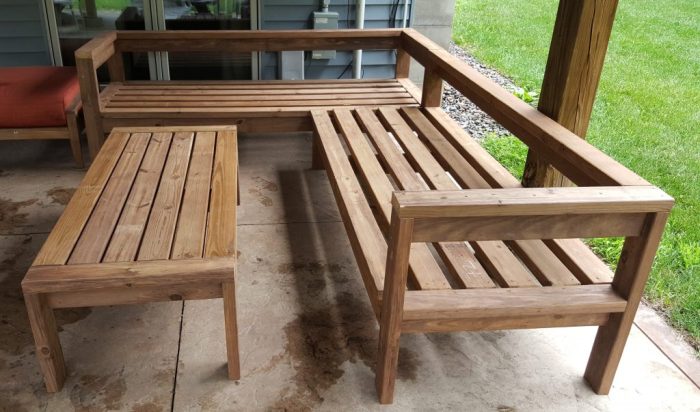Outdoor woodworking plans offer a chance to bring your creative visions to life in the fresh air. Whether you’re a seasoned craftsman or a beginner, these plans guide you through building everything from sturdy furniture to beautiful structures. The process of crafting with wood outdoors is rewarding, allowing you to connect with nature while creating something unique and lasting.
This guide delves into the essentials of outdoor woodworking, from selecting the right tools and materials to mastering basic techniques. We’ll explore popular project ideas, discuss design considerations for durability, and provide safety tips for working with wood outdoors.
Introduction to Outdoor Woodworking

Outdoor woodworking offers a unique blend of creativity, craftsmanship, and the serenity of nature. Whether you’re a seasoned woodworker or just starting out, working with wood outdoors can be a rewarding and enjoyable experience.
Benefits of Outdoor Woodworking
The benefits of working with wood outdoors extend beyond simply enjoying the fresh air. Here are some key advantages:
- Ample Space: Outdoor workshops provide ample space for larger projects and allow you to work on pieces that might be too big for an indoor workshop.
- Natural Light: Natural light is essential for accurate color matching and seeing wood grain details. Working outdoors eliminates the need for artificial lighting, which can be harsh and distort colors.
- Dust Control: Woodworking often generates a lot of dust. Working outdoors allows for better ventilation and reduces the risk of dust buildup in your home or workshop.
- Fresh Air and Relaxation: The open air and natural surroundings can be incredibly therapeutic, providing a refreshing break from the confines of indoor work.
Popular Outdoor Woodworking Projects
The possibilities for outdoor woodworking projects are endless, ranging from simple to complex. Here are some popular examples:
- Outdoor Furniture: Building furniture like benches, tables, chairs, and swings is a classic outdoor woodworking project. It allows you to create pieces that enhance your outdoor living space and add a personal touch to your yard.
- Birdhouses and Feeders: Creating birdhouses and feeders is a fun and rewarding project that attracts birds to your garden and provides a great opportunity to practice woodworking skills. You can personalize these projects with different designs and materials.
- Planters and Trellises: Building planters and trellises adds beauty and functionality to your garden. They can be customized to fit your plants and create a visually appealing landscape.
- Outdoor Structures: More ambitious projects like gazebos, pergolas, and decks require advanced woodworking skills but offer significant rewards. They can transform your outdoor space into a comfortable and inviting area for entertaining or relaxation.
Essential Tools and Materials
Outdoor woodworking requires specific tools and materials to handle the unique demands of working with wood outdoors. This section will cover essential tools for outdoor woodworking, different types of wood suitable for outdoor projects, and tips on selecting and preparing wood for outdoor use.
Essential Tools for Outdoor Woodworking
- Hand Tools: These are fundamental for precise work and can be used for various tasks.
- Hand saw: Used for cutting wood to size. Consider a crosscut saw for cutting across the grain and a ripsaw for cutting with the grain.
- Chisels: Used for shaping and carving wood.
- Mallet: Used for striking chisels and driving nails.
- Screwdriver: Used for driving screws and tightening bolts.
- Measuring tape: Essential for accurate measurements.
- Level: Ensures that surfaces are horizontal or vertical.
- Clamps: Securely hold pieces of wood together while working.
- Power Tools: These can speed up the woodworking process and provide greater power.
- Circular saw: Used for making straight cuts and ripping wood.
- Jigsaw: Used for making curved cuts and intricate shapes.
- Drill: Used for drilling holes and driving screws.
- Belt sander: Used for smoothing and shaping wood surfaces.
- Router: Used for creating edges, grooves, and other decorative features.
- Safety Gear: Essential for protecting yourself while working with wood.
- Safety glasses: Protect your eyes from flying debris.
- Hearing protection: Protect your ears from the noise of power tools.
- Work gloves: Protect your hands from cuts and splinters.
- Dust mask: Protect your lungs from sawdust.
Wood Types for Outdoor Projects
Outdoor projects require wood that can withstand the elements. Here are some common types:
- Cedar: Naturally resistant to rot, insects, and moisture. Often used for decks, fences, and siding.
- Redwood: Similar to cedar in its durability and resistance to decay. Often used for outdoor furniture and structures.
- Teak: A dense, durable hardwood that is naturally oil-rich, making it resistant to moisture and insects. Often used for outdoor furniture and decking.
- Pressure-Treated Pine: Pine wood treated with chemicals to prevent rot, decay, and insect damage. Commonly used for decks, fences, and other outdoor structures.
- Ipe: An extremely dense and durable hardwood from South America. Highly resistant to decay and insects. Often used for high-end outdoor furniture and decking.
Selecting and Preparing Wood for Outdoor Use
Choosing the right wood and preparing it properly are crucial for a successful outdoor woodworking project.
- Consider the project’s purpose: Determine the type of wood that best suits the project’s needs and the environmental conditions it will face.
- Inspect the wood: Look for any signs of damage, such as cracks, knots, or warping. Select straight and sound pieces of wood for the best results.
- Properly store the wood: Store wood in a dry and well-ventilated area to prevent warping, cracking, and insect infestation.
- Pre-treat the wood: Apply a sealant or stain to protect the wood from moisture, UV rays, and insects. This will help extend the lifespan of your outdoor project.
Basic Outdoor Woodworking Techniques
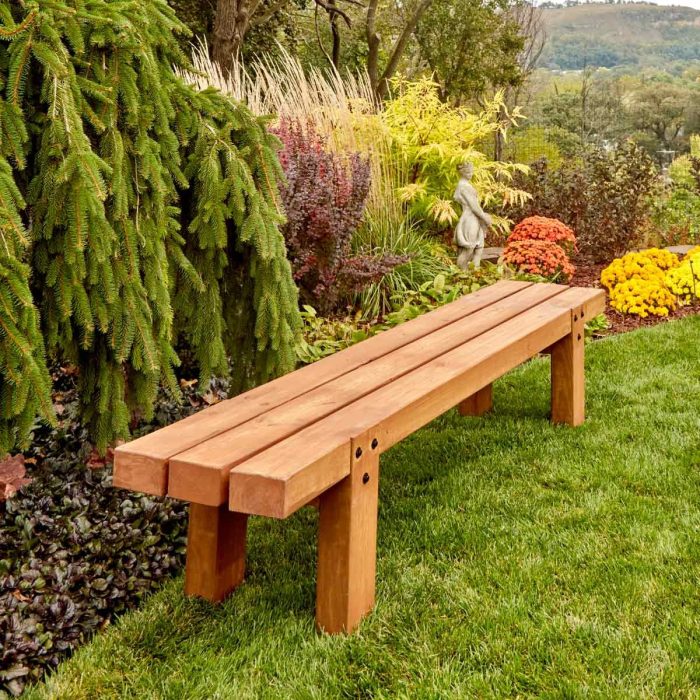
Outdoor woodworking projects involve various techniques, each requiring specific tools and skills. This section covers essential techniques for cutting, shaping, and joining wood, laying the groundwork for successful outdoor projects.
Cutting Wood
Cutting wood is a fundamental technique in woodworking, enabling you to shape and size lumber for your project.
- Hand Sawing: Hand saws are versatile for making straight cuts, crosscuts, and ripping. They require precision and a steady hand.
- Power Sawing: Power saws, such as circular saws and miter saws, provide greater speed and accuracy for cutting. Circular saws are ideal for straight cuts and ripping, while miter saws excel at precise angled cuts.
- Jigsawing: Jigsaws are used for intricate cuts and curved shapes. They use a reciprocating blade that moves up and down, allowing for precise cuts in various materials.
Shaping Wood
Shaping wood involves creating curves, edges, and other forms for a project.
- Planing: Planing smooths and flattens wood surfaces. Hand planes are used for small-scale planing, while power planers are more efficient for larger projects.
- Sanding: Sanding smooths rough surfaces, removes imperfections, and prepares wood for finishing. Different grit sandpaper is used for various levels of smoothness.
- Chiseling: Chisels are used for shaping wood, removing excess material, and creating intricate details.
Joining Wood
Joining wood techniques securely connect pieces of wood.
- Screwing: Screwing is a common and versatile joining method. Screws provide strong and durable connections, suitable for various wood types and project sizes.
- Nailing: Nailing is a quick and simple method for joining wood. Nails are hammered into wood to create a secure connection.
- Gluing: Gluing provides a strong and durable bond between wood pieces. Wood glue is used for various joints, offering a strong and lasting bond.
Finishing and Protecting Outdoor Woodworking Projects
Finishing and protecting outdoor woodworking projects ensures durability and longevity.
- Staining: Staining enhances the natural beauty of wood while providing protection from weathering. Stain penetrates the wood, adding color and depth.
- Sealing: Sealing creates a protective barrier against moisture, UV rays, and other elements. Sealants can be applied as a clear finish or with a tint to enhance the wood’s color.
- Painting: Painting provides a durable and long-lasting finish, protecting wood from the elements. Paint can be applied in various colors and finishes to achieve desired aesthetics.
Popular Outdoor Woodworking Projects
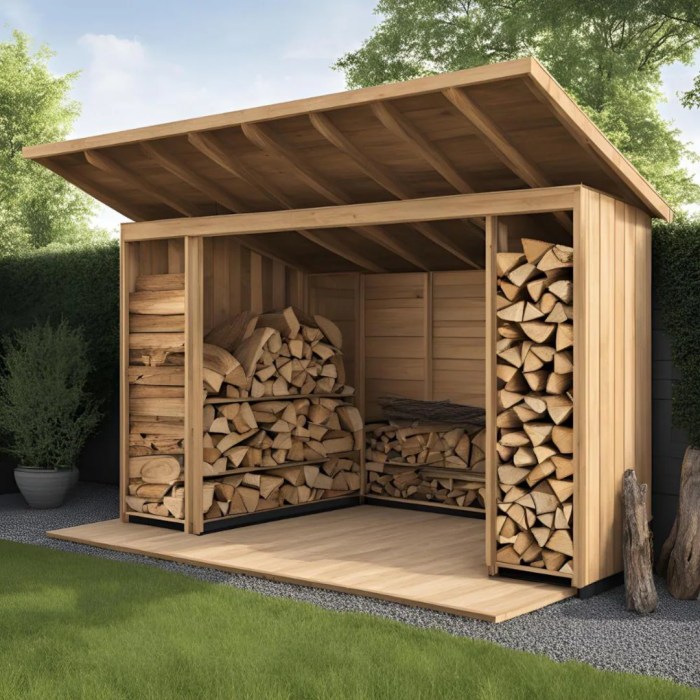
Outdoor woodworking projects can be a great way to enhance your home and yard while enjoying a rewarding hobby. There are countless possibilities, ranging from simple to challenging, allowing you to choose projects that align with your skill level and interests.
Beginner Projects
Beginner projects are ideal for those new to woodworking or looking for a quick and satisfying project. These projects typically involve simple designs and basic tools, making them perfect for learning fundamental woodworking techniques.
- Birdhouse: A birdhouse is a classic beginner project that is both functional and visually appealing. The basic design involves a simple box with a roof, a small entrance hole, and a perch. You can customize the birdhouse by adding details like a decorative roof or a painted finish.
- Materials: Wood (pine or cedar), screws, nails, glue, paint or stain, and a birdhouse pattern.
- Tools: Saw, drill, screwdriver, sandpaper, measuring tape, and a pencil.
- Planter Box: A planter box is a versatile project that can be used to grow flowers, herbs, or vegetables. You can create a simple rectangular box or get creative with different shapes and sizes.
- Materials: Wood (cedar or redwood), screws, nails, glue, and a planter box pattern.
- Tools: Saw, drill, screwdriver, sandpaper, measuring tape, and a pencil.
- Small Table: A small table is a useful addition to any outdoor space. You can build a simple end table, coffee table, or side table using basic woodworking techniques.
- Materials: Wood (pine or cedar), screws, nails, glue, and a table pattern.
- Tools: Saw, drill, screwdriver, sandpaper, measuring tape, and a pencil.
Intermediate Projects
Intermediate projects offer a greater challenge and require more advanced woodworking skills. These projects typically involve more intricate designs, complex joinery, and a wider range of tools and materials.
- Outdoor Bench: An outdoor bench is a great way to add seating to your patio, garden, or backyard. You can build a simple bench using basic woodworking techniques or create a more elaborate design with curved arms or a decorative back.
- Materials: Wood (cedar, redwood, or teak), screws, nails, glue, and a bench pattern.
- Tools: Saw, drill, screwdriver, sandpaper, measuring tape, pencil, router, and clamps.
- Trellis: A trellis is a decorative and functional structure that can be used to support climbing plants. You can build a simple trellis using basic woodworking techniques or create a more elaborate design with latticework or curved panels.
- Materials: Wood (cedar, redwood, or pressure-treated lumber), screws, nails, glue, and a trellis pattern.
- Tools: Saw, drill, screwdriver, sandpaper, measuring tape, pencil, router, and clamps.
- Swing Set: A swing set is a fun and engaging project that will bring joy to children and adults alike. You can build a simple swing set using basic woodworking techniques or create a more elaborate design with multiple swings, a slide, and a climbing structure.
- Materials: Wood (cedar, redwood, or pressure-treated lumber), screws, nails, glue, hardware, and a swing set pattern.
- Tools: Saw, drill, screwdriver, sandpaper, measuring tape, pencil, router, and clamps.
Advanced Projects
Advanced projects require a high level of woodworking skill and experience. These projects typically involve complex designs, intricate joinery, and specialized tools and materials.
- Outdoor Gazebo: An outdoor gazebo is a luxurious addition to any backyard. You can build a gazebo using traditional woodworking techniques or incorporate modern materials and designs.
- Materials: Wood (cedar, redwood, or pressure-treated lumber), screws, nails, glue, hardware, and a gazebo pattern.
- Tools: Saw, drill, screwdriver, sandpaper, measuring tape, pencil, router, clamps, and specialized tools for complex joinery.
- Pergola: A pergola is a beautiful and functional structure that can be used to create shade and add architectural interest to your outdoor space. You can build a simple pergola using basic woodworking techniques or create a more elaborate design with decorative elements or climbing plants.
- Materials: Wood (cedar, redwood, or pressure-treated lumber), screws, nails, glue, hardware, and a pergola pattern.
- Tools: Saw, drill, screwdriver, sandpaper, measuring tape, pencil, router, clamps, and specialized tools for complex joinery.
- Outdoor Kitchen: An outdoor kitchen is a luxurious and functional addition to any backyard. You can build a simple outdoor kitchen using basic woodworking techniques or create a more elaborate design with multiple appliances, countertops, and storage.
- Materials: Wood (cedar, redwood, or pressure-treated lumber), screws, nails, glue, hardware, appliances, countertops, and an outdoor kitchen pattern.
- Tools: Saw, drill, screwdriver, sandpaper, measuring tape, pencil, router, clamps, and specialized tools for complex joinery.
Design Considerations for Outdoor Projects: Outdoor Woodworking Plans
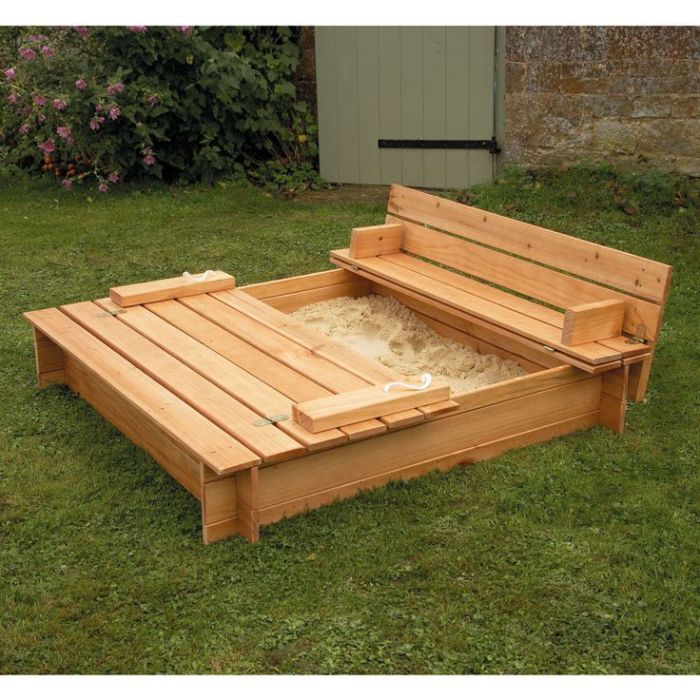
Building for the outdoors requires careful consideration of the elements that will affect your project’s longevity and performance. Understanding the unique challenges posed by weather and the environment is crucial for creating durable and aesthetically pleasing outdoor structures.
Weather Resistance
Weather resistance is paramount for outdoor projects. It’s essential to select materials and design elements that can withstand the harsh conditions they’ll be exposed to.
- Wood Selection: Opt for hardwoods like cedar, redwood, and teak, known for their natural resistance to rot, decay, and insects. These woods contain oils and tannins that provide inherent protection.
- Finishing: Apply high-quality finishes like marine-grade polyurethane or oil-based paints to create a protective barrier against moisture, UV rays, and weathering.
- Drainage: Ensure proper drainage to prevent water accumulation, which can lead to rot and structural damage.
- Ventilation: Allow for sufficient air circulation to prevent moisture buildup and mold growth.
Environmental Factors
Outdoor projects must also be designed to harmonize with the environment.
- Sun Exposure: Consider the amount of direct sunlight your project will receive. Choose materials that can withstand UV radiation and fading.
- Wind Loads: Design structures to withstand strong winds. Consider using bracing and anchoring techniques to provide stability.
- Temperature Fluctuations: Account for extreme temperature swings, as they can cause wood to expand and contract, leading to warping and cracking.
- Pest Control: Incorporate measures to prevent insect infestation, such as using treated lumber or applying pest-repelling finishes.
Design Examples, Outdoor woodworking plans
- Outdoor Furniture: Classic Adirondack chairs, made from durable cedar or redwood, are a timeless example of weather-resistant design. Their angled back and armrests provide comfort, while their solid construction ensures longevity.
- Structures: Pergolas, with their open latticework, allow for natural light and air circulation while providing shade. They can be constructed from pressure-treated lumber or cedar for durability.
- Decor: Outdoor planters made from weather-resistant materials like ceramic or metal can add a touch of greenery and beauty to any space. Choose designs that complement the surrounding environment and the overall aesthetic of your project.
Safety Precautions for Outdoor Woodworking
Outdoor woodworking, while a rewarding hobby, presents its own set of safety hazards. It’s essential to be aware of these risks and take appropriate precautions to protect yourself from injury.
Working with Power Tools
Power tools are an integral part of outdoor woodworking, but they can also be dangerous if not used correctly.
- Always wear safety glasses to protect your eyes from flying debris.
- Use hearing protection to prevent hearing loss from prolonged exposure to loud noises.
- Keep your work area clean and free of clutter to prevent tripping or falling.
- Make sure your tools are in good working order and properly maintained.
- Never use power tools while under the influence of alcohol or drugs.
- Always unplug tools when not in use and before making adjustments.
- Use a safety switch on your power tools to prevent accidental starting.
Handling Wood
Wood can be a dangerous material to work with if not handled properly.
- Always wear gloves to protect your hands from splinters and sharp edges.
- Use a push stick to keep your hands away from the blade of a saw.
- Lift heavy pieces of wood with your legs, not your back.
- Store wood in a dry place to prevent warping and rotting.
Working with Chemicals
Many outdoor woodworking projects involve using chemicals, such as wood stains, finishes, and glues.
- Always wear a respirator mask to protect yourself from fumes.
- Use chemicals in a well-ventilated area.
- Follow the manufacturer’s instructions carefully.
- Store chemicals in a safe place out of reach of children and pets.
Fire Safety
Outdoor woodworking often involves using power tools that can generate heat and sparks, creating a fire hazard.
- Keep a fire extinguisher handy and know how to use it.
- Clear the area around your work station of flammable materials.
- Never leave a running power tool unattended.
- Be aware of the weather conditions and take precautions to prevent wildfires.
Inspiration and Resources for Outdoor Woodworking
Outdoor woodworking can be a fulfilling and rewarding hobby. The possibilities for projects are endless, from simple birdhouses to elaborate decks and gazebos. However, even experienced woodworkers can benefit from inspiration and guidance.
Online Resources
The internet is a treasure trove of information and inspiration for outdoor woodworking. There are countless websites, blogs, and forums dedicated to the craft. Here are some excellent resources:
- Woodworking for Mere Mortals: This website offers a wealth of information on various woodworking techniques, projects, and plans. It’s a great place to start for beginners and seasoned woodworkers alike.
- Fine Woodworking: This magazine and website provide in-depth articles, project plans, and interviews with renowned woodworkers. It’s a valuable resource for those seeking to elevate their woodworking skills.
- Ana White: This website features a vast library of free woodworking plans, tutorials, and articles. It’s particularly popular for its user-friendly instructions and detailed explanations.
Books
While online resources are abundant, books offer a more comprehensive and focused approach to specific woodworking topics. Here are some noteworthy books for outdoor woodworking:
- “The Complete Illustrated Guide to Woodworking” by Glen D. Huey: This comprehensive guide covers all aspects of woodworking, from basic techniques to advanced projects. It’s a great reference for beginners and experienced woodworkers.
- “Outdoor Woodworking Projects” by Popular Mechanics: This book features a wide range of outdoor woodworking projects, from simple birdhouses to elaborate gazebos. It provides clear instructions and detailed diagrams.
- “The Woodworker’s Guide to Outdoor Furniture” by Bruce Hoadley: This book focuses on building durable and stylish outdoor furniture. It covers a variety of design styles and construction techniques.
Tutorials
Online tutorials are an excellent way to learn new skills and techniques. Many websites and platforms offer step-by-step instructions and video demonstrations. Here are some popular options:
- YouTube: YouTube is a treasure trove of woodworking tutorials, covering everything from basic techniques to complex projects. Search for specific projects or techniques to find relevant videos.
- Skillshare: This platform offers a wide range of online courses, including woodworking tutorials. You can find courses on specific techniques, projects, or styles.
- Udemy: Udemy offers a similar range of online courses, including woodworking tutorials. You can often find affordable courses on specific topics or projects.
Inspiring Projects
Seeing inspiring outdoor woodworking projects can spark your creativity and motivate you to embark on your own projects. Here are some examples:
- Outdoor Kitchens: Outdoor kitchens are becoming increasingly popular, offering a way to extend your living space into the backyard. They can range from simple grilling stations to elaborate kitchens with multiple appliances.
- Pergolas: Pergolas are a beautiful and functional addition to any outdoor space. They provide shade and create a sense of intimacy.
- Custom Furniture: Creating custom outdoor furniture allows you to personalize your space and create pieces that reflect your style. You can build benches, tables, chairs, and more.
Seeking Guidance from Experienced Woodworkers
Learning from experienced woodworkers can be invaluable. They can offer advice, tips, and guidance on techniques, materials, and design. Consider joining a local woodworking club, attending workshops, or seeking out a mentor.
Wrap-Up
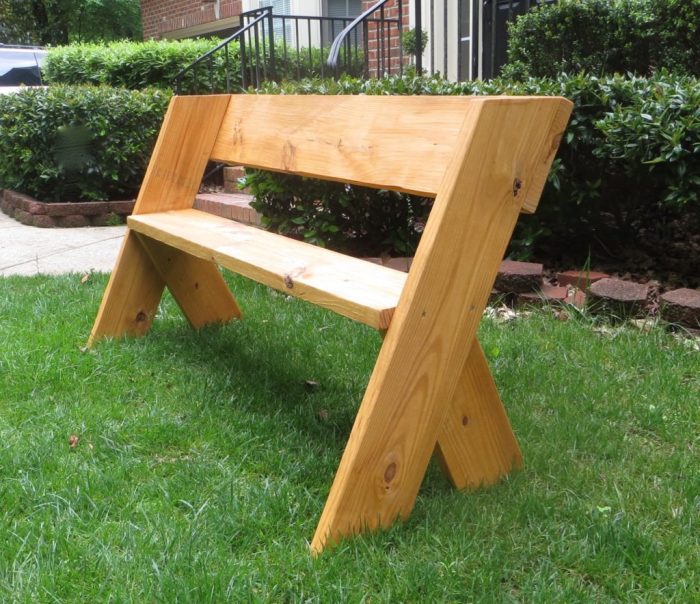
With a little planning and the right tools, you can turn your outdoor woodworking dreams into reality. Embrace the challenges and rewards of working with wood, and enjoy the satisfaction of creating something beautiful and functional. Let your imagination run wild and build something that will last for years to come.
FAQ Compilation
What are some beginner-friendly outdoor woodworking projects?
Simple projects like birdhouses, small benches, or planter boxes are great starting points for beginners. These projects use basic techniques and require fewer tools.
What kind of wood is best for outdoor projects?
Hardwoods like cedar, redwood, and teak are known for their durability and resistance to rot and insects. Pressure-treated lumber is also a good option for outdoor projects that will be exposed to moisture.
How can I protect my outdoor woodworking projects from the elements?
Apply a high-quality wood finish, such as a stain or sealant, to protect your projects from moisture, UV rays, and insects. Regular maintenance, such as re-applying the finish every few years, will help extend the life of your outdoor woodworking creations.
Outdoor woodworking projects are a great way to spend time outdoors and create something beautiful and functional. From building a birdhouse to crafting a sturdy picnic table, the possibilities are endless. If you’re looking for a more intricate project, consider making a cradle.
Check out these cradle woodworking plans for inspiration. After you’ve tackled that, you can move on to bigger outdoor projects like a swing set or a pergola.

